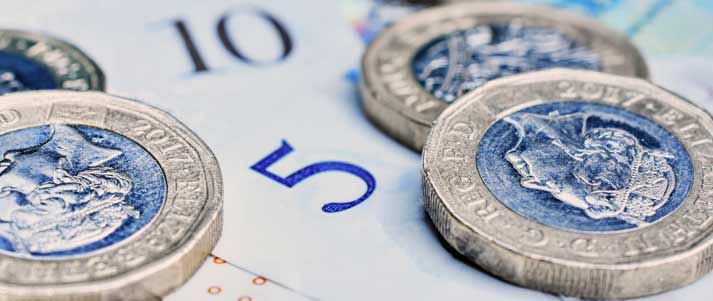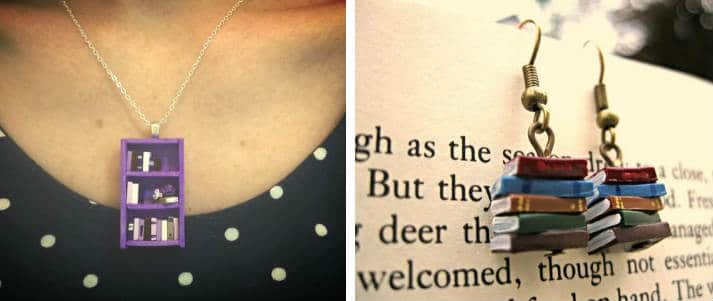How to sell on Etsy and make money
Are you crafty or a dab hand at design? Turn your hobby into a money-making venture by setting up shop on Etsy. Here's how to start selling.

Ever heard of Etsy? It's an online marketplace designed specifically for "unique items".
This can be pretty much anything, from greeting cards and candles to bath bombs, clothes and jewellery. As long as your items are handmade, vintage (meaning at least 20 years old) or craft supplies, you're good to go.
Etsy reportedly has over 9 million active sellers and more than 96 million active buyers. There's definitely an audience out there if you can make something that people will want to buy.
If you've got the right product and use the insider tips below, you can start making money from Etsy within days.
Beginner's guide to selling on Etsy
How much money can you make on Etsy?
We'll be honest here – how much money you could make entirely depends on how successful your shop becomes.
Some people make a steady side income, and others earn enough to quit their jobs and sell on Etsy full-time. So, is selling on Etsy worth it?
It's not likely you'll become a millionaire. However, if you follow a few simple rules, you could easily make some extra cash from your hobbies in your spare time.
How to sell on Etsy
Here is how to make money by selling on Etsy:
-
Decide which products to sell

Credit: Wren and Wilson - Etsy
This is the hard part – but if you choose wisely, this could be the start of a whole new business. It doesn't even need to be a physical item. Plenty of people are selling digital downloads on Etsy or creating imagery for people to use on their websites and social media.
If you're really struggling for ideas of what to sell on Etsy to make money, why not take a look at the site to see what others are doing? See this as an opportunity for inspiration, but make sure you don't copy someone else's idea.
If you're really switched on, this is the best stage to create or order a prototype of your product. It will allow you to see what it will look like, make it easier to take product photos and test out the quality.
-
Choose a name and logo for your shop
Don't think too hard about a name for your Etsy shop. It won't have much of an impact on your sales. Even after your store has gone live, you can still change it. Think of something simple and snappy and try not to be too obscure or clever. Also, try googling your name to make sure it's not clashing with anything else.
Once you've decided on a name, you can easily make yourself a custom logo using Canva. This online programme is a lot like Photoshop but much, much easier, and it's free to use.
If you aren't comfortable designing the logo yourself, you could use a site like Fiverr to hire someone to help you with it.
We'd also recommend buying a custom domain to match the name of your Etsy shop now, just in case you do decide to expand in future. It only takes a few minutes. -
Create clear and attractive images of your items
This is even more important on Etsy than it is on eBay and Amazon. Your product has (hopefully) never been seen before and a great photo can really make the difference here, even more than your shop name and logo.
If you've ordered or created a test product, this should be quite easy.
Take a look at what other stores with similar products are doing, choose the style you like the most and then work on making yours similar.
-
Save up some money

Credit: Ubermensch Matt – Shutterstock
Unlike a lot of online selling sites, it isn't 100% free to sell on Etsy. Firstly, you're typically charged around £12 to open your shop unless they're running a promotion.
Once you've set it up, each listing costs around 16p. If you invest another £1 into listing six items, we think that's definitely enough to get you started.
You may also want to consider investing in an Etsy Plus account for around £8 a month. This gives you access to features like bonus advertising credits and shop customisation tools to help you stand out among other stores.
Etsy is quite a competitive market so getting yourself seen at the start can be tough. However, if you're not confident you would make the money back with profit after paying the monthly fees, stick to a Standard account.
If you're savvy with social media, this is a great way to promote your store online for free.
And while we're on the subject of money, you need to think about the cost of your item(s). Spend some time to work out the cost of making the product (including any upfront costs spread across a few units) and then come up with a sales price.
Make sure you're charging enough to cover your costs and make a profit but don't get greedy. It's the internet, and if you're overcharging, there will be someone else out there who will undercut you and take all of your business.
-
Create a postage plan
Research the most cost-effective way to pack and post your creations. It might be easiest to use the Post Office, but if your items are very big or heavy, a courier company might be a better option.
Make sure you know the cost before going ahead, too. There's nothing worse than charging £2.99 for delivery and having to pay £4.99 yourself when it comes to it.
It's important not to overcomplicate things when it comes to setting up your Etsy store. The best thing you can do is just get started.
If you spend too long focusing on getting everything perfect, you might never end up launching your store. And once you have something up on the site, you can always make improvements!
How much does it cost to sell on Etsy?
Etsy's fees are relatively complicated compared to some other selling sites. The main fees you’ll be charged as an Etsy seller are:
- A shop set up fee – In most circumstances, new sellers will pay around £12 to open a shop on Etsy.
- A listing fee – It costs around 16p to put each item up for sale, and each listing lasts four months, or until it sells – whichever comes sooner. You can set up your items to auto-renew if you have more than one available and you'll be charged around 16p as soon as an item sells to keep it live.
- A transaction fee – Etsy will charge you 6.5% of the sale price (including postage and packaging fees) when you make a sale.
- A payment processing fee – This is 20p + 4% of the entire payment (including postage).
- Offsite ads fee (optional) – If you allow Etsy to advertise your listings, you'll be charged 15% on sales made from an ad. You can choose not to have your products advertised.
As an example, let's imagine you sell something for £10 + £2.99 postage (not from an offsite advert). It'll cost you £0.16 in listing fees, £0.84 in transaction fees and £0.72 as a payment processing fee. This is a total of £1.72.
Etsy Plus

Credit: Coryographies - Etsy
Etsy has also introduced a Plus subscription which costs more money but gives you access to more perks and features.
For around £8 a month, you get access to:
- More shop customisation
- 50% off a custom .com address, or a free .store address for a year
- 15 listing credits and around £4 in credit for Etsy Ads each month
- 30% discount at Moo
- Option to let shoppers know when your products are back in stock.
Is Etsy Plus worth it?
Etsy sellers have strongly differing opinions on this. Some feel that the money you earn back in the form of listing credits and advertisements each month makes the Plus subscription a pretty good deal.
Others feel like the discounts on things like marketing materials and personalised domain names still don't get you the best price available, so they aren't worth paying for.
Look into all the T&Cs and think carefully before you invest in a subscription. If you won't use all of the features, it might not be worth the extra money.
The pros of selling on Etsy
Still unsure if it's right for you? Here are the main pros of selling on Etsy:
-
Audience
Etsy isn't the biggest selling site out there, but if your product is quirky and homemade, it could be one of the most profitable for you.
The edge that Etsy has over other selling sites like eBay or Gumtree is that buyers are much more focused on the quality and unique nature of each individual listing, rather than price or location.
Whereas the typical eBay or Amazon customer might type in a search term and list everything from lowest to highest price, an Etsy buyer wouldn't expect their search to result in a page full of identical products.
This makes it a lot easier to be noticed if you've created something one of a kind, regardless of the cost.
-
Features
When you start selling on Etsy, you have to create a shop. While doing this, you're encouraged to add a logo, a banner and a description with social media links that will help a visitor find out a bit more about you. eBay seller pages tend to be quite plain and anonymous, but there are so many ways to add a personal touch on Etsy.
The best Etsy businesses use all of these features to create their own memorable brand that people will search out by name. If you want your own .com address to link directly to your shop, you can set one up (for a monthly fee) directly through Etsy, too.
Etsy has options to allow you to sell personalised items more easily. And since custom orders might take you a bit longer to create, you can charge more for them. There's also the opportunity to create coupon codes to encourage customer loyalty or reward your fans on social media.
You can also close your shop if you need a break, which can be a really useful feature to reassure loyal customers when they come back and see an empty shop.
-
International opportunities
We've talked to a number of Etsy sellers in the UK, and they all told us that a surprising percentage of their orders come from overseas – especially Australia and the US.
Because each item is specially made, people are less concerned with receiving their shopping quickly. This means there are even more potential customers out there for you.
The cons of selling on Etsy

Credit: Africa Studio – Shutterstock
Here are the downsides of selling on Etsy:
-
Fees and slow payments
You can choose to receive your payments monthly, weekly, fortnightly or daily. But once they're "paid", it can take a few days for the money to hit your bank.
This isn't ideal when you might need to pay for postage before then.
It can also be hard to keep track of all the listing fees, commissions and payment charges once your shop is up and running. On top of that, they get charged in a big chunk once a month.
Remember to set money aside to pay them, and don't treat everything you're getting paid from Etsy as profit.
-
It's primarily a US website
Unfortunately, UK sellers are at a disadvantage compared to those based in America. For example, the shipping time is often longer, postage is more expensive and prices will show up as $6.40 for a US buyer instead of £5.
-
You don't have complete control
Having a store on Etsy is not the same as creating your own website. You don't have complete control over every aspect of the design, and it's not as easy to develop your own personal brand.
Plus, Etsy can technically kick you off the site at any time (although they won't do that unless you break the rules).
Also bear in mind that if you do want to turn your Etsy store into a fully-fledged business, it's often considered more 'professional' to have your own website. An Etsy store is a great way to start your business, but if things take off you might want to migrate to an independent platform.
What to sell on Etsy to make money
Here are some examples of the best things to sell on Etsy to make money:
- Stickers
- Personalised bottles, glasses and T-shirts
- Notebooks
- Jewellery
- Art prints
- Knitting patterns
- Greetings cards
- Clip art
- Enamel pins.
But people are selling all sorts of amazing handmade goods on Etsy. The more original, the better. We've seen successful shops selling everything from nail polish to food, so don't be limited to only what's most popular.
Tips for selling on Etsy

Credit: Bookishly UK - Etsy
We've asked some experienced Etsy sellers what they wish they'd known when they opened their shops and this is what they told us:
Keep an eye on your margins. Initially, I worked out my prices to give me about 10% profit, but once my cards started to get really popular, I realised I was underpriced compared to my competitors and I'd missed out on earning a lot more.
Oh, and don't be afraid to buy Etsy adverts, I spend about $2 a day and it works for me – just keep an eye on it.
Leah from Famous Last Cards
Etsy search is predictive, so you can put in a word relevant to your products and it will come up with suggested key terms to use.
You should use specific key terms that are at two or more words, and have them in your title as well as using all of your tags.
You don't need fancy equipment to get good photos. I take all of mine on a phone. Use natural light and a nice background and you're on your way. Wallpaper samples (faux wood perhaps) make good backgrounds for flatlays.
Louise from Bookishly UK
Etsy alternatives
Here are the best alternatives to Etsy:
- Need a quick sale? You've almost certainly heard of eBay. Plenty of people use it to sell the same sort of items you'd expect to sell on Etsy. If you can keep costs low enough to be competitive and want to sell items quickly, eBay could be the site for you.
- Don't want to ship internationally? Folksy is a handmade-only site (no vintage items) that is just for UK sellers.
- Want your own website? Shopify is one good website builder to create an online store. There are monthly costs for each of their plans so it's worth calculating if it will be cost-effective. For tips and more info, read our guide to starting a Shopify store. Or, for alternative options, see our list of the best e-commerce website builders.
- Selling clothes or accessories? If your Etsy business idea is fashion-related, there are loads of sites out there for selling clothes online. Try selling on Vinted, Depop or other similar sites.
- Ready to invest in your business? Not on the High Street (NOTHS) is a UK-based site with Etsy-like products and a trusted reputation. However, you need to apply to sell your items on NOTHS, and according to online forums, this isn't easy to do. Plus, if you're accepted as a seller, you can expect to be charged a joining fee of £199. If you're confident you'd sell more through Not on the High Street, it could make the fees well worth it.
Now you know how to sell on Etsy, why not consider branching out into these other business ideas.








